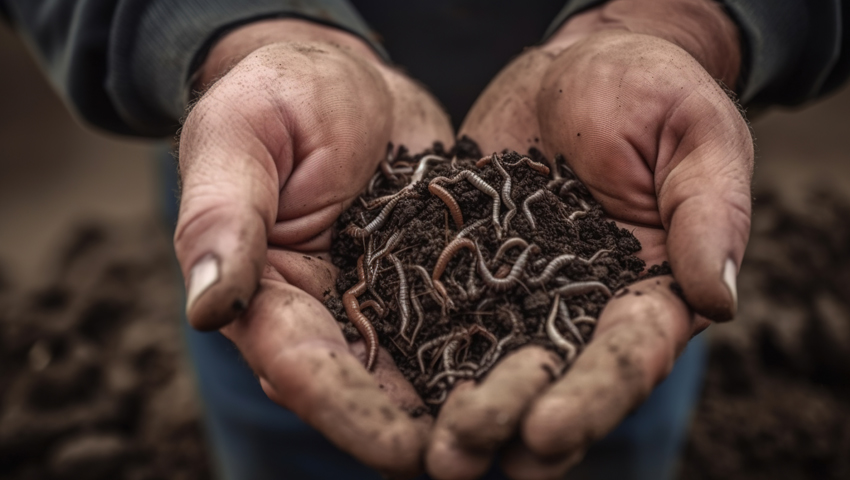IN A POST on LinkedIn, Patrick Worms from the Centre for International Forestry Research and World Agroforestry, explains why inorganic fertilisers are one of the worlds biggest sources of greenhouse gas emissions.
He writes that the long-held belief of farmers and agronomists alike has been that inorganic fertilisers must boost soil carbon, because they boost plant growth.
“It sounds logical,” he says, “But when you measure soil carbon in soils treated with inorganic fertilisers, its level doesn’t rise. It drops.”
“The puzzle was only solved three years ago, in a study published by Scientific Reports. It all hinges on bacteria. What’s key is that they’re not genetically stable species, like whales, wheat or trees. They swap genes with gay abandon, and use this to adapt to changing environments.
“When the nitrogen added to soils comes with a lot of carbon – as it does when you use compost or manure, or have tree litter fall on it – bacteria use all that carbon wealth to build and extrude a lot of long carbon chains. Those carbon exudates give soil a much higher porosity, so water, nutrients and oxygen easily flow through it.
“That helps all sorts of soil creatures, including some that make their living from dissolving bedrock. That liberates fresh nutrients – and on it goes.
“But when the nitrogen floods in without any carbon, as it does with inorganic fertilisers, bacterial metabolism changes. Carbon becomes scarce, so there are fewer exudates. The soil loses its porosity. Water, nutrients and oxygen have a harder time flowing through it. The soil, becoming compacted, also becomes anoxic: there’s so little oxygen left that a lot of soil life dies (that’s one of the reasons industrial farmers have to plough so often: to aerate the soil. And that puts more carbon into the atmosphere).
“Yet, thanks to all that nitrogen, some bacterial growth continues. But because there’s so little oxygen, bacteria are pushed to share genes for a metabolism better suited to anoxic environments. Soon, many species switch to a metabolism focused on nitrogen and sulphur. The waste product of that is an immensely powerful greenhouse gas: nitrous oxide.”
Mr Worms concludes that “with inorganic fertiliser, you get less carbon in the soil, put more carbon in the air, and add a lot more nitrous oxide, too. A horrible outcome.”
“The good news,” he says, “is that the genes that bacteria use in oxygen-rich environments have not disappeared from that soil (just as the genes for an anoxic environment were present, too). Their frequency has merely dropped. If management changes – by planting trees, say, or adding manure – the nitrogen and sulphur pathway genes get swapped back for the oxygen pathway ones, and the virtuous circle resumes. That’s why it’s so easy, conceptually, to fix heavily degraded, agricultural soils.”
